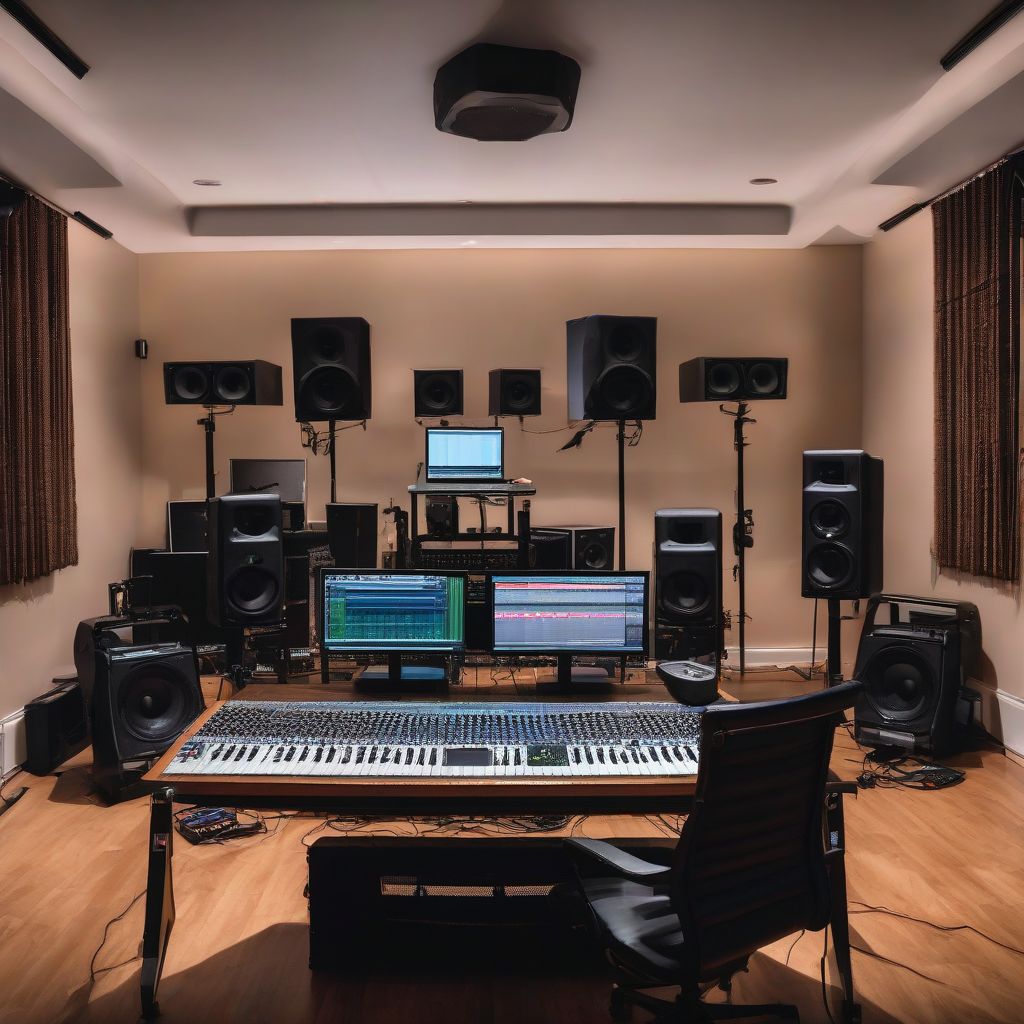Imagine this: you’ve just poured your heart and soul into writing and recording your new music. The performance is electrifying; the arrangement, pure genius. You can already picture it topping the charts. But then, disaster strikes in the mixing and mastering stage. The bass is muddy, the vocals are lost in the mix, and the overall sound is dull and lifeless. 💔
What went wrong?
The culprit could be a lack of monitoring accuracy during the crucial mixing and mastering processes.
Why Monitoring Accuracy is Crucial
Whether you’re a seasoned audio engineer or a home studio enthusiast, monitoring accuracy is the bedrock of a professional-sounding track. It ensures that your creative vision translates seamlessly to the ears of your listeners, regardless of the playback system they use.
What is Monitoring Accuracy?
In the simplest terms, monitoring accuracy refers to how faithfully your studio monitors (speakers) reproduce the actual sound of your mix. It’s about minimizing sonic colorations and distortions so that what you hear in your studio is a true representation of the final audio file.
Why is it So Important?
-
Informed Decisions: Accurate monitoring allows you to make informed decisions about every element in your mix, from EQ and compression to panning and effects. You can confidently sculpt the sound, knowing that your adjustments are based on a true representation of the audio.
-
Translation Across Playback Systems: In today’s multi-platform world, your music will be heard on everything from high-end audio systems to laptop speakers and earbuds. Monitoring accuracy ensures that your mix translates well across all these different playback environments, preventing unpleasant surprises like a boomy bass or piercing highs on certain systems.
-
Professionalism and Credibility: A well-mixed and mastered track immediately signals professionalism and elevates the perceived quality of your music. It demonstrates attention to detail and a commitment to delivering a polished product to your listeners.
Common Monitoring Challenges and How to Overcome Them
1. Room Acoustics: The Silent Saboteur
The acoustics of your listening environment play a HUGE role in monitoring accuracy. Untreated rooms can introduce unwanted reflections, resonances, and standing waves, coloring the sound reaching your ears and making it difficult to judge the mix accurately.
Solutions:
- Acoustic Treatment: Invest in acoustic panels, bass traps, and diffusers to minimize reflections and control low-frequency buildup.
- Speaker Placement: Experiment with speaker placement to find the optimal listening position in your room (the “sweet spot”).
- Software Solutions: Room correction software can analyze your room’s acoustics and apply digital filters to mitigate some of the negative effects.
2. The Monitor Speaker Conundrum
Not all studio monitors are created equal. Some speakers are designed to flatter the sound (often boosting bass frequencies), while others aim for a more neutral and analytical presentation.
Solutions:
- Choose Flat-Response Monitors: Opt for monitors known for their flat frequency response, which reproduces all frequencies as accurately as possible without emphasizing or attenuating any particular range.
- Reference Monitors: Consider investing in a pair of dedicated reference monitors. These are designed to provide the most accurate and uncolored sound reproduction possible.
3. Ear Fatigue: The Listener’s Nemesis
Our ears get tired, especially after prolonged exposure to loud sounds. This fatigue can dramatically affect our perception of frequency balance and dynamics, leading to poor mixing decisions.
Solutions:
- Take Breaks: Regular listening breaks are essential to prevent ear fatigue. Step away from the speakers every 30-45 minutes to give your ears a rest.
- Reference Listening Levels: Avoid mixing at excessively high volumes, as this contributes to ear fatigue. Aim for a moderate listening level that allows you to hear all the details without straining your ears.
 Accurate Monitoring in Studio
Accurate Monitoring in Studio
Pro Tips for Enhanced Monitoring Accuracy
- Calibrate Your Monitors: Many monitors offer calibration settings to adjust for the acoustics of your room.
- Use a Spectrum Analyzer: A spectrum analyzer visually displays the frequency content of your audio, helping you identify any imbalances or anomalies.
- Reference Tracks: Compare your mix to commercially released tracks in a similar genre. This helps you gauge the overall balance and sonic qualities of your mix.
- Trust Your Ears (and Take Breaks!): Your ears are your most valuable tool. Learn to trust your instincts, but also remember to give them regular breaks to avoid fatigue.
Conclusion: Invest in Accuracy, Elevate Your Sound
Monitoring accuracy isn’t just about fancy equipment—it’s about creating the optimal listening environment and developing critical listening skills. By prioritizing accuracy in your mixing and mastering process, you equip yourself to make informed decisions, ensure a polished and professional sound, and ultimately, share your music with the world in the way it was truly meant to be heard.
Now that you understand the importance of monitoring accuracy, take a moment to evaluate your current setup. Are there any areas where you can improve? Investing in your listening environment is an investment in the quality of your music.
What steps are you taking to improve your monitoring accuracy? Share your experiences in the comments below!
[amazon bestseller=”studio monitors”]
